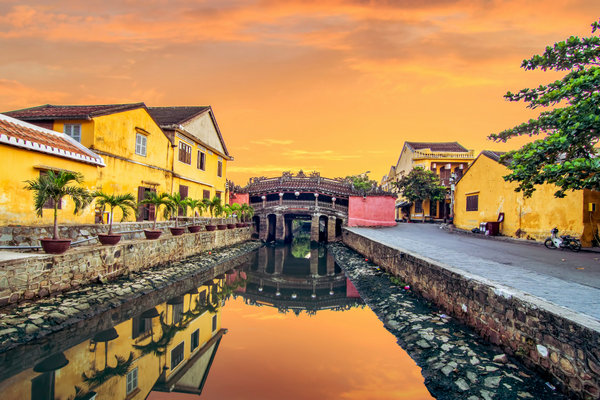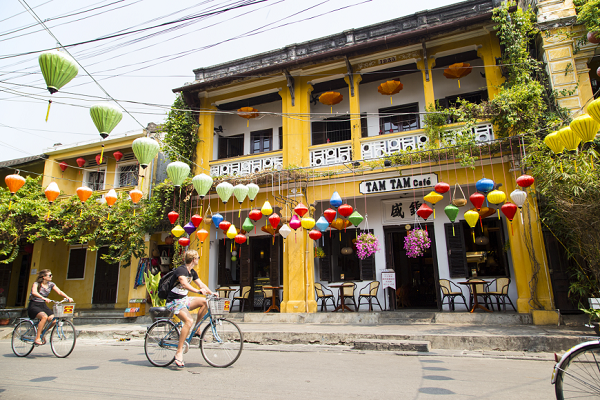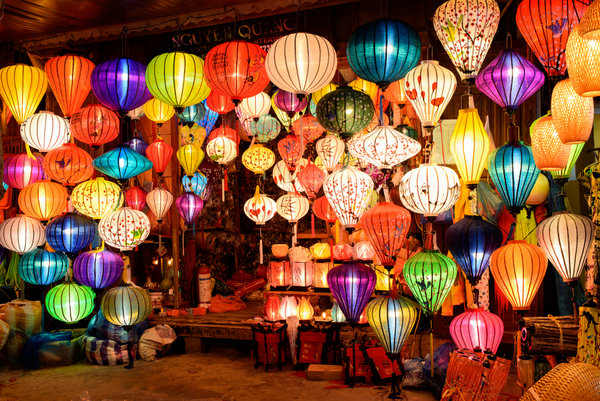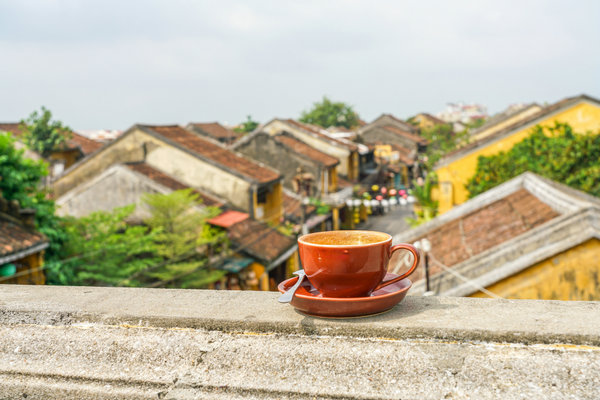Hoi An's top 5 most instagrammable spots
Hoi An has captivated the imaginations of artists and photographers for hundreds of years. In the 18th Century, Hoi An was one of the most important trading ports in the South China Sea. Different Languages were spoken in its alleyways, artisans swapped materials and inspiration, and Hoianese handicrafts like ceramics were traded as far away as to Egypt and Portugal. The ancient town has preserved these dynamic legacies like the Japanese Bridge and Chinese Temples, as living memories of its past connection to Japan, China and Europe.
Free from pollution and vehicle traffic, pedestrians stroll past golden yellow buildings where women with laughs squat together to sell fresh food and handicrafts like bamboo baskets under strings of silk lanterns. Rice paddies stretching to the horizon undulate in ten thousand shades of green and reflect the sky back to itself in a mirror of water fields.
Hoi An was declared a UNESCO World Heritage Site in 1999. It still retains the heartbeat of its past commerce, culture and dreams. There is something about the city that transforms every guest into an artist or photographer. Here are some of its most photogenic and instagrammable sites and scenes.
Japanese Covered Bridge
The Japanese Bridge was built in the 16th century to connect the Chinese and Japanese quarters of Hoi An. It is now such an iconic landmark of Hoi An City, even of the world. This bridge is printed on the 20,000 VND note. On the north side of the bridge is a temple dedicated to the Taoist God of weather, lending the bridge its Vietnamese name: Chùa Cầu, the temple bridge.
Visit early in the morning, you can avoid beating the crowds as well as cross the bridge without paying a fee. A photo taken inside the bridge-presents you with carved Chinese scripts and monkey and dog statue guardians. A photo taken outside the bridge captures the delicate beauty of its architecture. During the daytime you can get good pictures of its fine details: carved dark wood trimmed with red and gold lacquer stretching between two shorelines of sunshine-yellow walls. At night, the bridge glows with diffuse colored lighting, casting a reflection into the water below.

"The Japanese Bridge is a remnant of cultural exchange and an iconic symbol of Vietnam itself."
Yellow Walls of Hoi An
It is possible to spend hours wandering through the bewitching butter-yellow buttresses of the city, enchanted by goldenrods and canaries, sunflowers and saffron-hued Hoi An. Hoi An burns itself into the memories and photographs of visitors in this hypnotizing shade of yellow. It is easy to get lost in the narrow alleys between ancient buildings that wind endlessly through the converging cityscape. Blue and green doors and windows bloom to open from French balconies. The wear and tear of the paint add charm and character where it reveals raw walls beneath.
There are lots of opportunities in the narrow maze between buildings to play with scale, perspective and contrast. Wear a poppy-red dress to pose brightly against the yellow. Find a pretty spot to sit where you can set up a frame. From here, wait for bicycles or women in ao dai to ride or walk across the golden gallery walls for a truly classic cultural shot.



"Hoi An's yellow walls can transform anyone into a photographer -- everything looks like art."
Temples in Old Town Hoi An
Hoi An is rife with ornate temples built in a collage of architectural influences. All of them offer opportunities for beautiful photography. Pop in and out of garden courtyards, ducking under strings of lanterns and gold and red Chinese calligraphy and engravings from the past. Some temples require a ticket to enter, but others are free. Keep an eye out for Buddhist drums and gongs, for Daoist cosmological symbols and trigrams, ornate gates, engraved altars, painted doorways, and for carved wooden statues of spirits and dragons.
Some of these buildings date back as far as to the 14th and 15th centuries, before Japan, before China, and even before Hoi An became a Vietnamese city. The Hindu-influenced style of the Champa empire lingers on architectural examples like the My Son Sanctuary.
Hoi An Lanterns
Perhaps more than anything else, strings of silk lanterns are the most iconic symbols of Hoi An. Imported from Japan, which inherited them from China, these traditional lanterns are now a solidly Vietnamese tradition. Lanterns have been handcrafted here in Hoi An for hundreds of years. During the daytime, they dangle in bright colors from doorways or stretch across in the glass windows of shopfronts, as the antique city's signature accessory.
Take a picture during the day to capture the lanterns' different shapes, colors, and patterns pressed against yellow walls. But the lanterns really come alive at night. Head to Old Town just before sunset to see everything softly illuminated, pedestrians padding by and, everyone's eyes looking up into the sky. When true darkness falls the lanterns glow in high contrast. Early dusk is the magic hour for catching photos of faces illuminated by the lanterns without losing the background of silhouette and shadow.

"Hoi An glows like a fairy tale at night."
Faifo Coffee
Most of the best shots of Hoi An happen at streets, but Faifo Coffee shop is a delightful exception. This cafe is one of the only buildings in Hoi An with a rooftop terrace, so the expansive view it offers across the rooftops of the city is truly unique. On a bright and sunny day, the yellow buildings with their brown roofs ripple - like sharp and triangular waves against the blue sky, all the way out to the horizon.
The coffee is thankfully as good as the views, so it's worth waiting for the perfect shot. The rooftop can get crowded with people posing for their own selfies, so be patient and enjoy the atmosphere and the view while you wait for your own photo shots. That's the point, anyway, isn't it?

Latest
- Live Broadcast Held by Cambodia Rural Road Project of the Belt and Road Overseas Engineering Science Camp
- Construction of China-Laos railroad heightens Chinese learning boom, Lao students grouped to Guangxi to study
- Opening Ceremony of Begonia Cultural Festival and Begonia Poetry Event Successfully Held
- Students from Indonesia arrive for study in China
Contact us
Address:ASEAN-China Centre, No. 43, Liangmaqiao Road, Chaoyang District, Beijing, China
Postcode: 100600
Tel: 86-10-65321660 ext 636
Fax: 86-10-85322527
Weibo: weibo.com/aseanchinacentre
